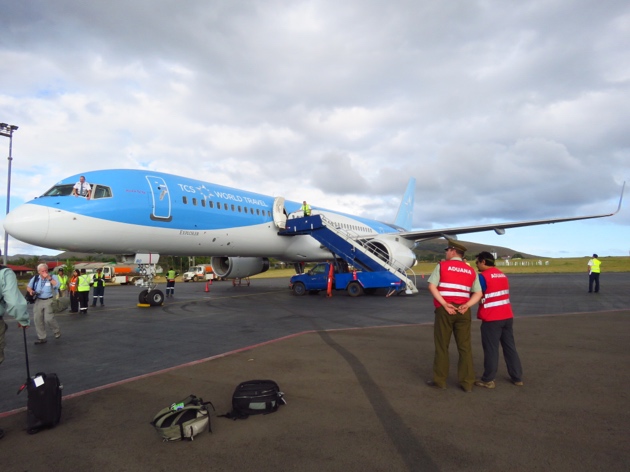
Welcome to Easter Island, the world’s most isolated inhabited island. The island received its name from the Dutch East India Company explorers, the first European visitors, who arrived on Easter Sunday in 1722. It is believed that Tahitian sailors gave the island the name Rapa Nui in the 1860s.
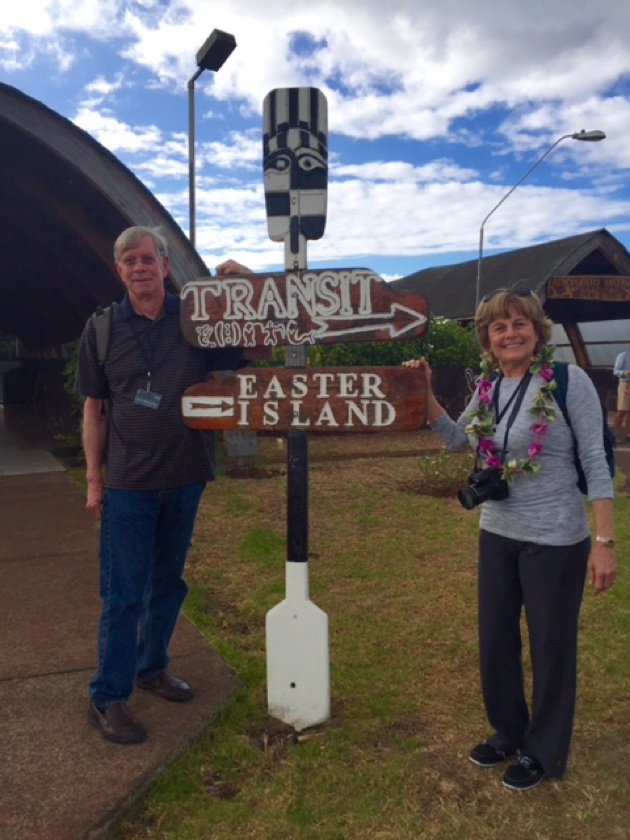
We are staying at the Hangaroa Eco Lodge, near the town of Hangaroa and not far from the airport. It is very interesting architecturally, built low to the ground and set into the landscape. Our room overlooks the ocean and is attractive–though we discovered it isn’t the most practical given the amount of luggage we had to organize. The lighting was also an issue. I found it amusing that our hotel bills itself as an eco lodge but still gives you the small bottles of shampoo etc. when a dispenser in the shower is much more environmentally friendly!


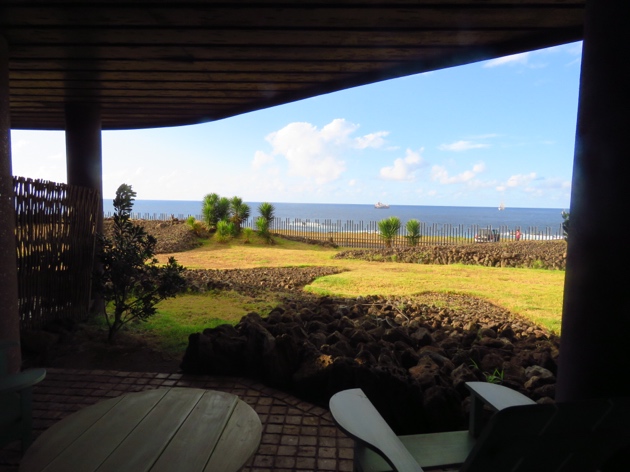
The time here is artificially set to be the same as Chile, while is on Eastern time, even though E.I. is 2000 miles west! Our iPads and iPhones are quite confused and show two hours later. Makes no sense at all!
After settling into our rooms we enjoyed a cocktail hour. Our flight crew joined us, which was fun. They are a delightful group and go out of their way to make things special. I’ll be doing a separate post with our musings about stuff like that. Our evening buffet table featured this lovely watermelon sculpture.

The sunset was spectacular, as were the waves crashing on the rocky shore.

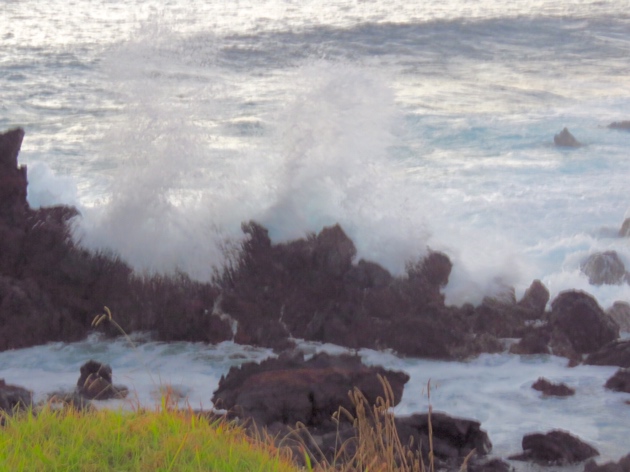
The next morning we visited three sites with several archeologists and anthropologists who live and study here. They shared their theories of how the island was settled and how the statues were built—and they don’t necessarily agree! In many places we visit, NG supports the research of the experts who share their knowledge with us. Here Nat. Geo donates to a non-governmental organization that preserves the social, cultural, and environmental heritage of the Island.
The original settlers of E.I. arrived c. 800-900 AD from Polynesia in the west, not as early as originally thought. They traveled enormous distances in dugout canoes to reach this tiny island (65 sq. miles) in the middle of nowhere. Pitcairn Island, of Mutiny on the Bounty fame, is the closest inhabited place. The local culture developed in isolation for about 1,000 years, making it an ideal archeological and anthropological laboratory to study. They worshipped gods that provided protection of their lineage and property during their lives and afterwards. These gods also brought birds and fish and agricultural improvements. The Moai represent the deified ancestors, the “living faces” of the past. (So sayeth NG.)
Here are a few views of E.I from the plane that I should have put earlier in the post. ? The airport runway was built by NASA for possible space shuttle landings so it’s extra long. Almost half the island is part of E. I. National Park.

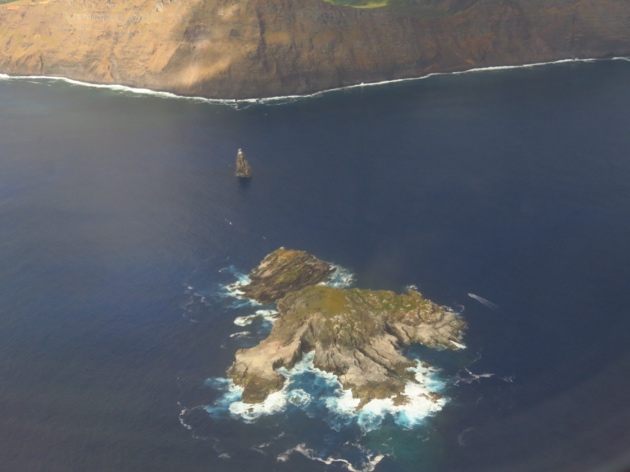
Those who study the island have found many cycles of prosperity followed by devastation from different causes; disease, natural catastrophes and such wiped out societies. The island’s ecosystems were fragile. Although the culture developed for about 1,000 years in isolation, we have evidence that there was contact with Polynesia until 1400 when it stopped–but we don’t know why. E.I. then remained isolated until the European settlers arrived: first the Dutch East India Company in 1722, then the Spanish in 1770, and Captain Cook from England in 1774. None of these explorers thought there was any reason to establish settlements, and until much later the island had few visitors, only whalers.
E.I. is a volcanic island with lots of lava rock. There are three volcanoes, two on the coast and one In the center. The Moai are sculpted from tuff, compressed cinder, and are actually very fragile. Islanders used the harder basalt to carve them, and all were carved in one quarry. More on that later!
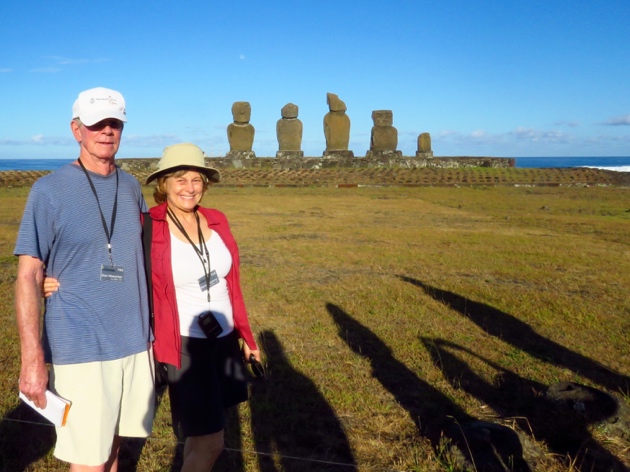
As you will see from the vibrant colors in the photos, we had a gloriously clear day with blue skies. We first visited Ahu Tahai, one of the major sites with three separate altars built over a 600 year period. (There are 25,000 archeological sites on the island!) Claudio Cristino, who arrived on E. I. in 1976 to begin his research, addressed us. The tribal groups divided the island into pie shaped territories with the widest else at the ocean with fishing rights. Each lineage built its own altars and Moai to represent their ancestral line. The more statues, the higher in status your group was; number mattered more than the height of the individual Moai. Most of the major altars are along the coast. The Moai face inland, creating a connection between the spiritual world of the ocean and the land. They looked inward and provided stability and prosperity for the island’s inhabitants.
The Moai were carved with eyes closed, asleep, until they were moved to their sites, when they received eyes like you can see in this photo. Red was a sacred color. Experts are not sure whether the red “thing” on this Moai’s head was a hat or represented a topknot hairstyle that the inhabitants sported.
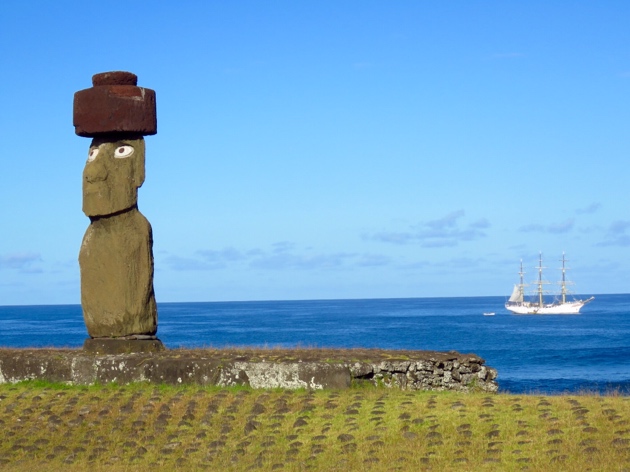
In my next post I’ll cover the quarry where all the Moai were carved and a reconstructed site.


What a fascinating post, Marlene. I knew very little about Easter Island, and your words (and terrific pictures) really made it come to life for me. You and Don look great.
Glad you are enjoying the posts, Gloria. And it was a fascinating place, for sure. As for us looking great, not so sure about that! Hardly any time to “pretty up!”
I feel like I am back at EI. One of our guides told us those with red were the most important. Who knows what BS they feed us!
Great views. Hope you had time for a hike to explore the lower sites, not the one with the 367 or whatever Moai.
By the time we had seen 3 sites, we had enough and it was already mid-afternoon. So no, we didn’t go to more altars.
I knew almost nothing about Easter Island so thanks for enlightening me. You are the fourth and fifth people that I know who have visited there over the last three months.
It was a fascinating place, Lois! We found it a worthwhile experience.
Looking forward to learning more about the carvings.
Fabulous! So much history for such a tiny island. Wonderful photos too – thank you?